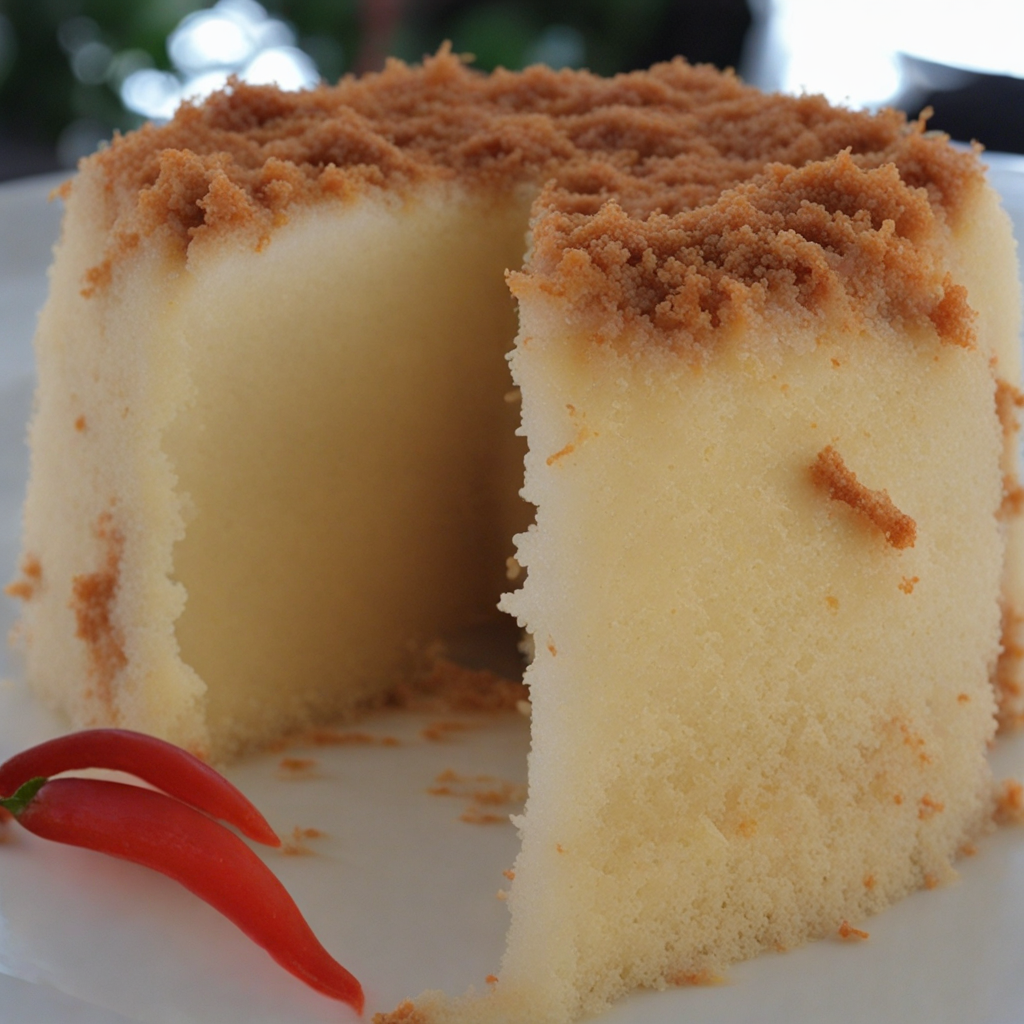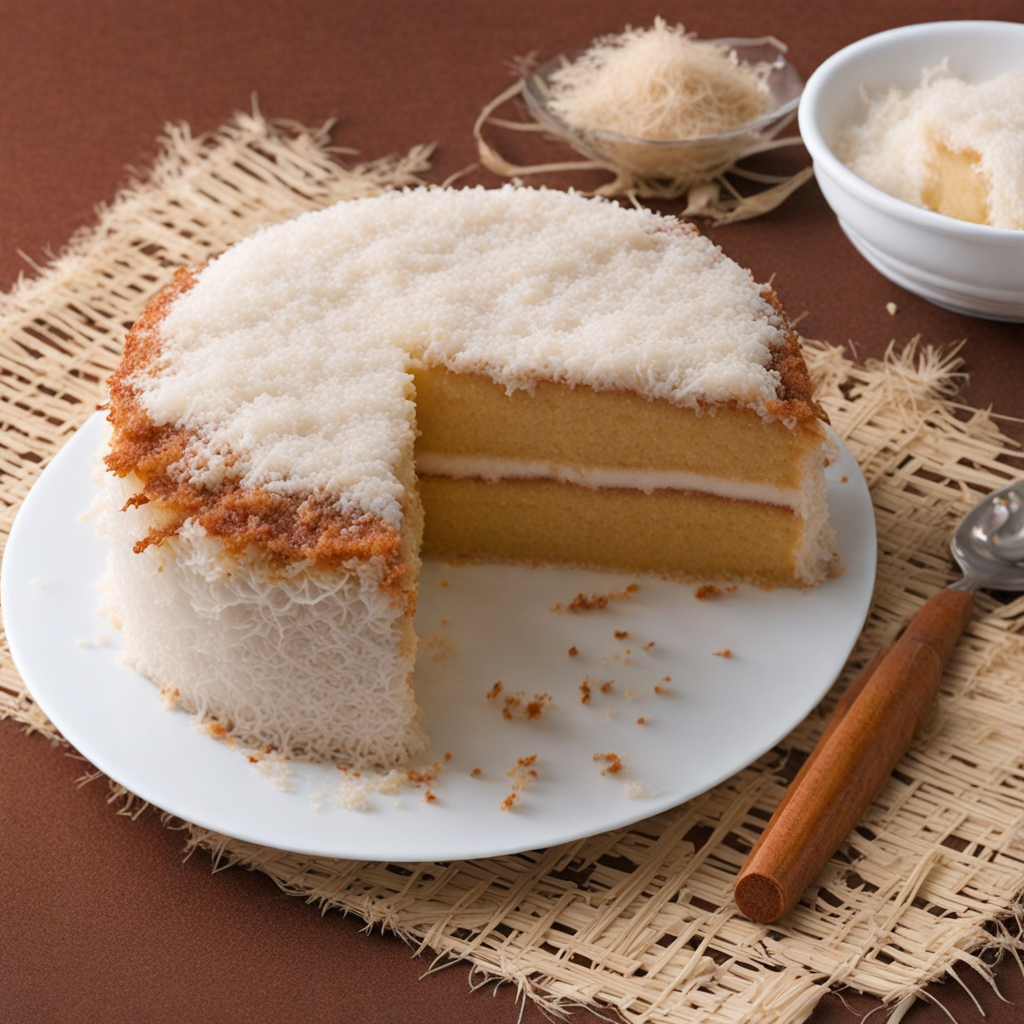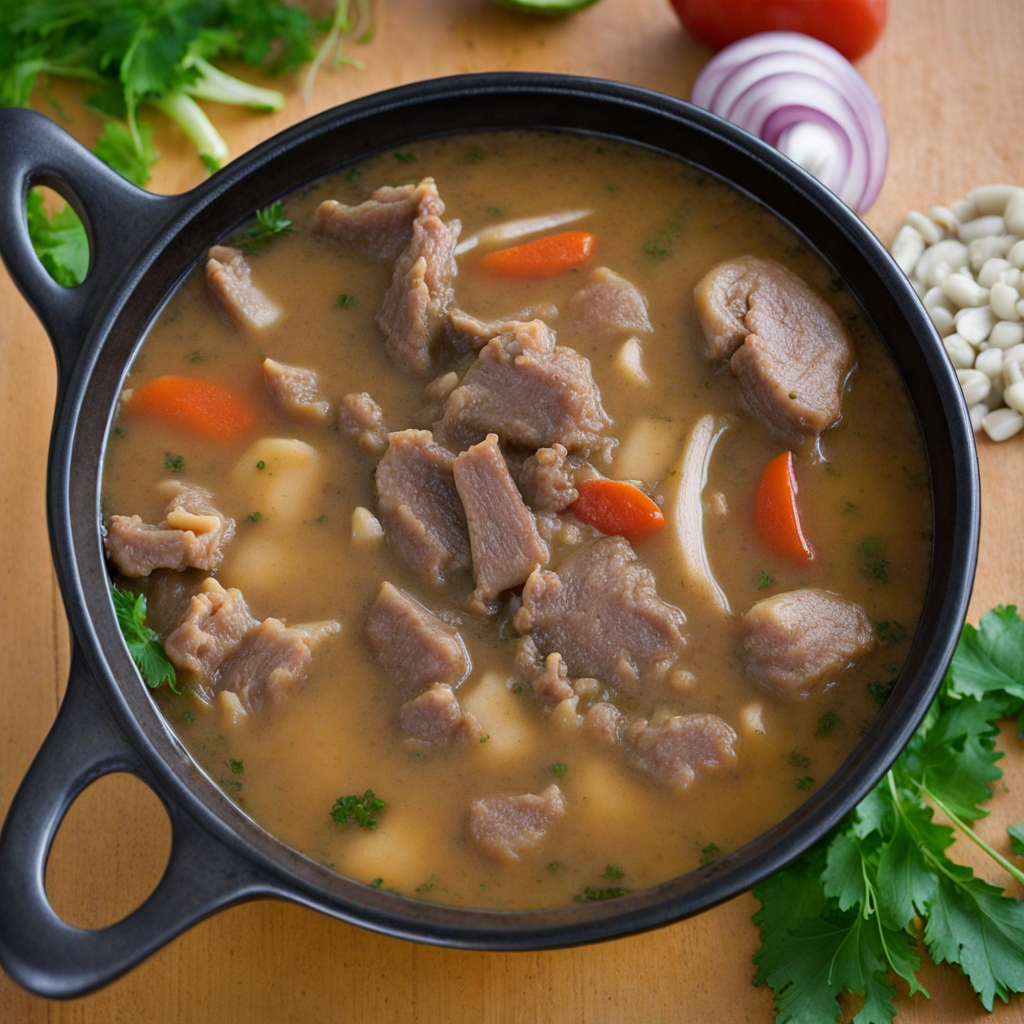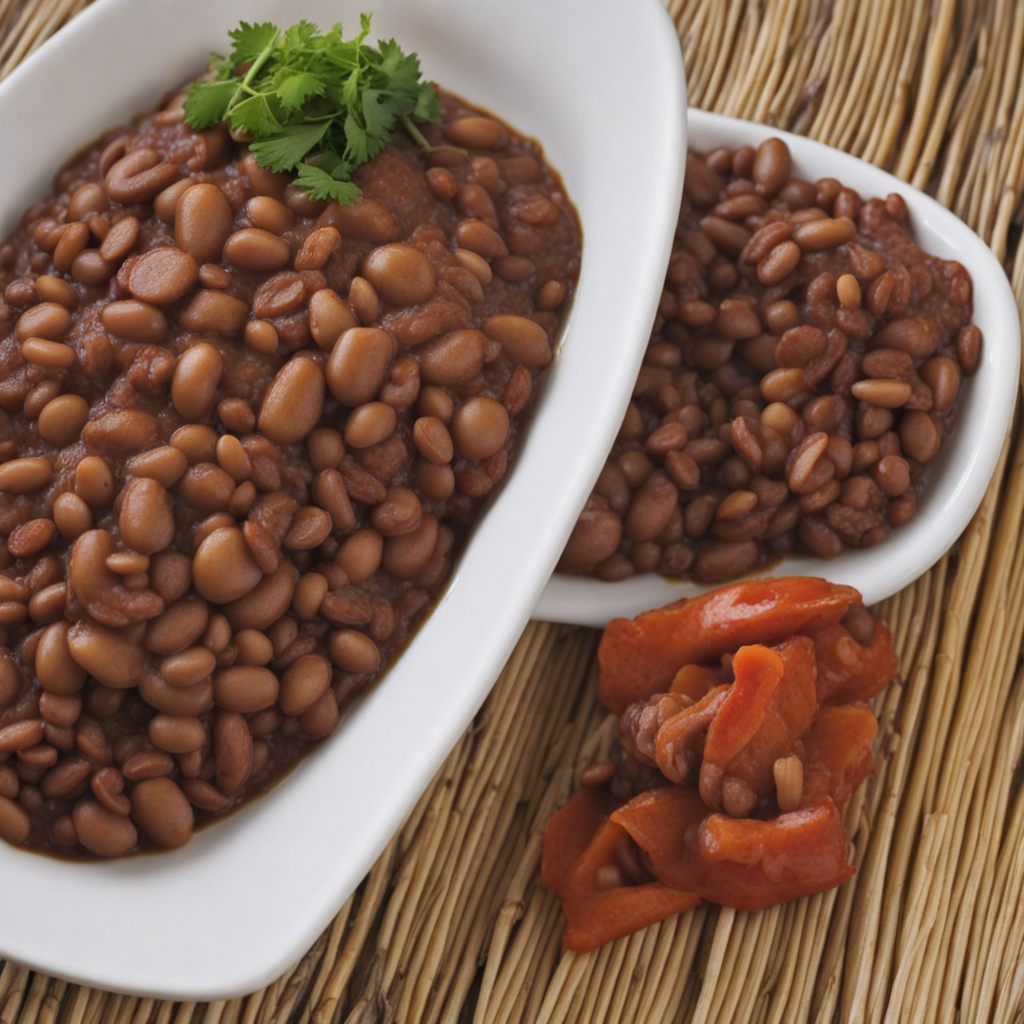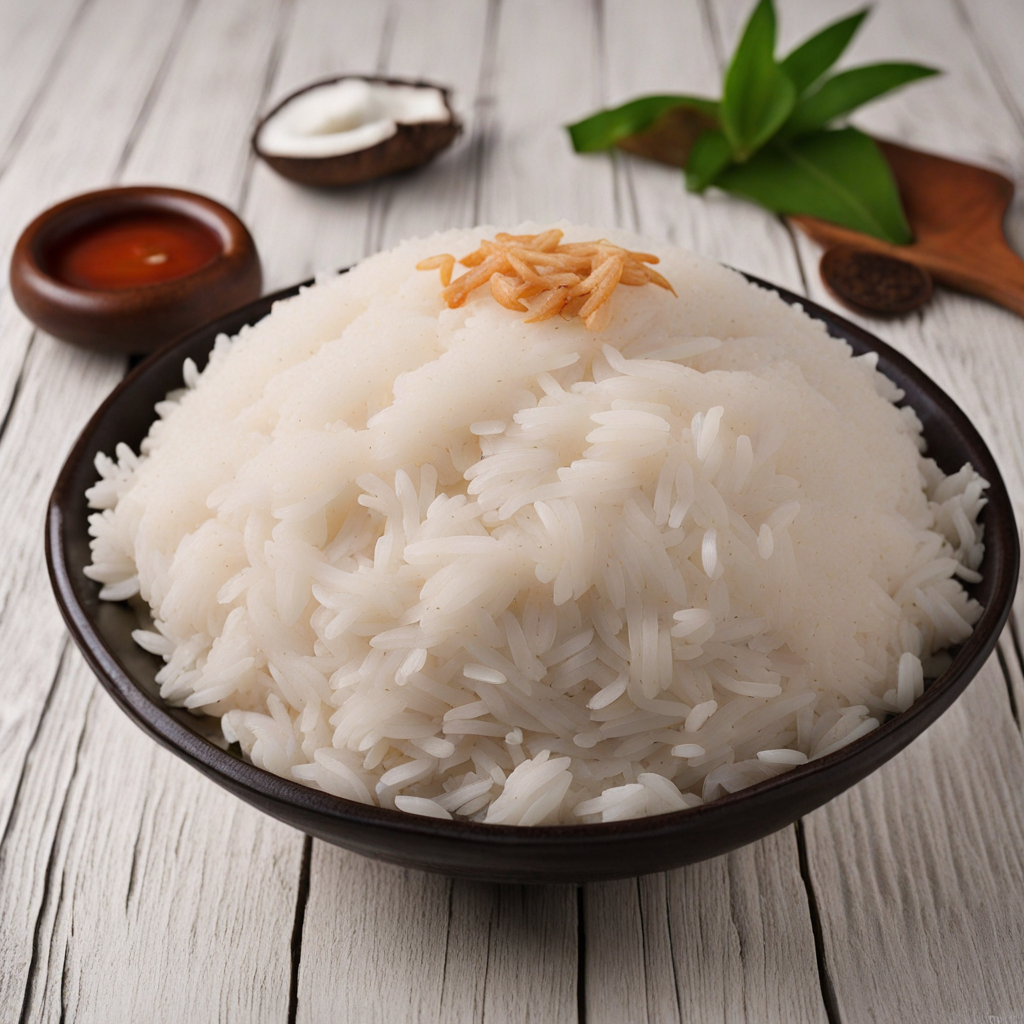Bojo
Bojo is a delightful Surinamese treat that showcases the unique fusion of flavors and textures found in the region's diverse cuisine. This baked cake, often made with a base of cassava, is known for its moist and slightly chewy consistency. The primary ingredient, cassava, is a starchy root vegetable that imparts a subtly sweet and earthy flavor, which is complemented by the addition of coconut, spices, and sometimes, a touch of sugar. The use of fresh grated coconut not only enhances the sweetness but also adds a rich, tropical aroma that is quintessentially Surinamese. In addition to cassava and coconut, Bojo often incorporates nutmeg, cinnamon, and vanilla, creating a warm and inviting flavor profile. These aromatic spices are typical in Surinamese cuisine, reflecting the country's multicultural heritage, influenced by Indigenous, African, Indian, and Dutch culinary traditions. The cake is typically baked to a golden perfection, forming a slightly crispy top that gives way to a tender, moist interior. Some variations may include raisins or other dried fruits, which add an extra layer of sweetness and texture, making each bite a delightful experience. Bojo is not just a dessert; it’s often enjoyed as a snack or breakfast item, showcasing its versatility. It can be served warm or at room temperature, making it perfect for any time of day. The combination of tropical flavors, hearty texture, and aromatic spices makes Bojo an exciting dish to explore for anyone keen to discover new tastes. Whether enjoyed at a local Surinamese gathering or made at home, Bojo is a true representation of the rich culinary tapestry of Suriname that invites food lovers to indulge in its unique flavors.
How It Became This Dish
The History of Bojo: A Culinary Gem from Suriname Bojo, often referred to as bojo cake, is a beloved treat originating from Suriname, a small, culturally rich country located on the northeastern coast of South America. This unique food item is a delightful blend of flavors and textures, showcasing the diverse cultural influences that have shaped Surinamese cuisine over the centuries. In this exploration, we will delve into the origins of bojo, its cultural significance, and its development over time, highlighting how this dish has become a cherished part of Suriname's culinary landscape. Origins of Bojo The history of bojo can be traced back to the early 20th century, deeply rooted in the rich tapestry of Suriname's multicultural society. Suriname is home to a mosaic of ethnic groups, including Indigenous peoples, Afro-Surinamese, Javanese, Chinese, and Hindustani communities, each contributing to the nation’s cultural and culinary identity. Bojo is particularly associated with the Afro-Surinamese community, where it is often made during festive occasions and family gatherings. The dish's name, "bojo," is believed to have derived from the word "boudin," a French term for sausage or pudding, reflecting the colonial influences of the French and Dutch in the region. The dish itself is made from a base of grated cassava, which is a staple ingredient in many traditional Surinamese dishes. Cassava, a tuber native to South America, was introduced to the region by Indigenous peoples long before European colonization. The use of cassava in bojo highlights the importance of this versatile ingredient in Surinamese cuisine. Ingredients and Preparation Bojo is typically made by grating fresh cassava and combining it with a variety of ingredients, including coconut, sugar, and spices such as nutmeg and cinnamon. The mixture is then baked to create a dense, moist cake with a slightly chewy texture and a subtly sweet flavor. Some variations include the addition of raisins or other dried fruits, which enhance the dish's sweetness and complexity. The preparation of bojo is often a communal affair, with families coming together to grate cassava and mix the ingredients. This collaborative aspect of making bojo not only fosters a sense of community but also reinforces the cultural significance of the dish as a symbol of togetherness and celebration. Cultural Significance Bojo holds a special place in the hearts of Surinamese people, transcending mere sustenance to become a symbol of cultural identity and heritage. It is commonly served during significant events, such as weddings, birthdays, and religious festivities, where it is often accompanied by other traditional dishes. Its presence at these gatherings underscores the importance of food in Surinamese culture as a means of bringing people together and honoring shared traditions. The dish also serves as a reflection of Suriname's history of resilience and adaptation. The blending of various culinary influences in bojo mirrors the country’s complex cultural landscape, where diverse ethnic groups have coexisted and enriched one another's traditions over time. Bojo has become a culinary emblem of Surinamese pride, celebrated for its unique flavors and the stories it carries from generation to generation. Evolution Over Time As Suriname has evolved, so too has bojo. In the mid-20th century, the dish began to gain popularity beyond the Afro-Surinamese community, finding its way into the kitchens of other ethnic groups in the country. This cross-cultural exchange has led to numerous innovative interpretations of the classic recipe, with modern cooks experimenting with different ingredients and preparation methods. Today, bojo can be found in various forms across Suriname and among the diaspora, often adapted to suit local tastes and available ingredients. Some bakers have embraced modern culinary techniques, incorporating flavors and textures inspired by international cuisines. The use of sweetened condensed milk, for example, has become a popular addition, giving the cake a richer texture and flavor profile. In recent years, bojo has also gained recognition beyond Suriname. As the global interest in diverse cuisines continues to grow, this Surinamese delight has found its way onto menus and into homes around the world. Food enthusiasts and chefs alike are discovering the charm of bojo, showcasing it at cultural festivals and events dedicated to celebrating the rich culinary heritage of the Caribbean and South America. The Global Influence of Bojo With the rise of globalization and the migration of Surinamese communities, bojo has not only remained a staple in Suriname but has also become a culinary ambassador for the country. In cities with significant Surinamese populations, such as Amsterdam, New York, and Paramaribo, bojo is often featured at cultural events, food festivals, and pop-up restaurants, allowing people from different backgrounds to experience Surinamese flavors. Social media platforms have also played a significant role in promoting bojo to a wider audience. Food bloggers and enthusiasts share recipes and photos, inspiring others to try their hand at making this traditional cake. This digital exposure has helped to create a sense of shared ownership over the dish, inviting people from various cultures to adapt it to their own tastes while honoring its origins. Conclusion Bojo serves as more than just a delicious treat; it is a testament to the rich cultural heritage of Suriname and the resilience of its people. This simple yet flavorful dish encapsulates the story of a nation shaped by diversity, community, and shared traditions. As it continues to evolve and adapt to new culinary landscapes, bojo remains a symbol of Surinamese identity, a bridge connecting the past with the present, and a celebration of the vibrant culinary culture that flourishes in Suriname and beyond. Whether enjoyed at a family gathering or a cultural festival, bojo invites all to partake in its history and savor its unique flavors, ensuring that this beloved dish will endure for generations to come.
You may like
Discover local flavors from Suriname


